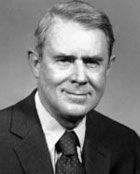This Day in History: October 5, 1978
Additional Date: October 5, 1978
South Africa had seized the German territory (then known as South-West Africa) during World War I and retained it after the war under a League of Nations mandate. In the years that followed, South Africa ignored repeated calls to turn Namibia over to majority rule. In 1966, the General Assembly passed resolution 2145 (XXI), terminating the old League of Nations mandate and declaring that South Africa had no further right to administer South-West Africa. An apparent breakthrough came in 1978, when over a decade of extensive diplomatic efforts culminated in a United Nations resolution to supervise Namibia's transition to independence. Then, without warning, outgoing South African Prime Minister John Vorster reneged on the U.N. plan. In response, U.S. Secretary of State Cyrus Vance led an international delegation to South Africa in October 1978, demanding that Pretoria either go along with the West's independence plan or face U.N.-imposed economic sanctions. It was tough talk, but in the end the Western powers backed away from initial threats, promising instead to veto any such proposal put to the U.N. Security Council. Apparently the Western powers hoped to retain enough leverage to eventually persuade South Africa to accept U.N.-supervised elections in Namibia. Finally in 1988, South Africa agreed to give up Namibia as part of a United States-brokered accord that also provided for the withdrawal of Cuban forces from Angola. On March 21, 1990 Namibia officially achieved independence.
